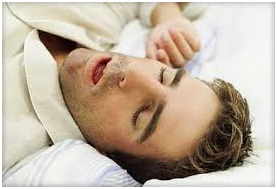Sleep apnea is a chronic sleep disorder wherein a person's breathing pattern during sleep is affected. The person suffering from the condition experiences breathing interruptions. The part wherein the person stops breathing can last for a few seconds and sometimes for a minute or two. Meaning, the person stops breathing for about 30 times in an hour. With such in regard, the condition may lessen the amount or level of oxygen that is going to the person's brain. Since sufferers stop breathing at some point during sleep, their deep sleep is also affected. Thus, their body goes back to light sleep. Therefore; they have poor sleep quality.

Scientifically speaking, sleep apnea has two types. The most common one which involves the blockage of the airway is known as obstructive sleep apnea or OSA. Such is usually caused by the collapse of the back throat soft tissue or airway when the person is sleeping. Since there is a very tight space for the air to move, OSA is usually accompanied with a loud snoring sound. The central sleep apnea or CSA, on the other hand, is a condition wherein the brain is unable to give signals to the muscles for them breathes. Such is caused by respiratory control center instability. This is usually common in people who have underlying illnesses and those who take certain medications.
As similar to any other conditions, people will be experiencing some initial signs and symptoms before they even know that they have sleep apnea. As mentioned above, snoring loudly and restless sleeping are some of the first signs. People may also experience headache and dry or sore throat upon waking up in the morning. Some of them also have low energy in the morning and may also feel too sleepy during the day, as well as experience mood changes and forgetfulness. The sad thing is that such signs and symptoms are very common to some other illnesses. Thus, it is very important that people see experts to help them determine if they have sleep apnea.
Sleep apnea is commonly diagnosed using polysomnogram or what is popularly known as the sleep study. It is a test that has a lot of components and involves the usage of electrodes. Such are placed on certain parts of the body so that the electrical signals released by the brain and muscle activity can be recorded. Such can be an in-clinic or an at home sleep test. Other tests that help diagnose sleep apnea include electroencephalogram (EEG), electromyogram (EMG), electro-oculogram (EOG), electrocardiogram (ECG), nasal airflow sensor, and snore microphone.
The good news is that, nowadays, people can already find a more affordable test solution that can actually be used in the comfort of their own homes. It is called the ResMedApneaLink Air. It is an at home sleep test that received approval from the American Academy of Sleep Medicine or AASM. It is just like the traditional sleep study test but is handier and does not involve the use of any electrodes. Such, however, is only meant to screen individuals. Thus, confirmatory tests and clinical consultations are still recommended if they have a positive with the test.
